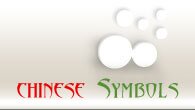|
Chinese Medicine
Formulas to Release the Exterior
Formulas that promote sweating, release the exterior and encourage expulsion of rashes are called releasing exterior formulas. In this section, the formulas for treating exterior syndromes caused by exogenous pathogenic wind and cold or by exogenous pathogenic wind and heat are introduced. As for the formulas which can release the exterior syndromes resulting from invasion by exogenous pathogenic summer-heat, dryness and dampness will be introduced in an other section. Generally speaking, the formulas which can release the exterior may be divided into three categories according to their properties:
1. Releasing exterior formulas with pungent and warm properties. They dispel wind and cold and are usually used for treating exterior syndromes caused by wind and cold.
2. Releasing exterior formulas with pungent and cold properties. They dispel wind and heat and are often used for treating exterior syndromes caused by wind and heat.
3. Releasing exterior formulas with toxic properties. They strengthen the body's resistance and release the exterior and are mainly used for treating a person with a weak constitution suffering from exterior syndromes.
Cautions: A large dosage of releasing exterior formula may cause excessive sweating which is not good for the patient. At the same time, the patient treated with releasing exterior formula should avoid cold, raw, greasy, indigestible food.
MAHUANG TANG
Decoction of Ephedra Combination
Ephedra (Mahuang) 6 g
Cinnamon twigs (Guizhi) 4 g
Apricot seed (Xingren) 9 g
Licorice (Gancao) 3 g
Method Used: The herbs are cooked by decoction.
Functions: 1. To promote sweating and release the exterior. 2. To promote the lung's function in dispersing and descending. 3. To soothe asthma.
Indications: Wind cold exterior excess syndromes due to invasion by exogenous pathogenic wind and cold.
Manifestations and Explanations
Fever
Invasion on the exterior by exogenous pathogenic wind and cold which make pores close and impair the normal function of defensive Qi with the result that lung Qi fails in its function of dispersing and descending; channels and collaterals blocked.
Chills
No sweating
Headache
General pain
Asthma
Thin, white tongue coating
Invasion on the exterior by exogenous pathogenic wind and cold.
Pale tongue proper
Superficial and tense pulse
Herbs and Actions
Ephedra (Mahuang)
Pungent and warm herbs to promote sweating so as to dispel the exogenous pathogenic wind and cold on the exterior.
Cinnamon twigs (Guizhi)
Apricot seed (Xingren)
To disperse and descend the lung Qi so as to pacify asthma and stop cough.
Licorice (Gancao)
To harmonize the other herbs.
Applications: Common cold, asthmatic bronchitis, acute rheumatic arthritis.
Modifications: 1. With asthma, cough with profuse, clear and white sputum as the main symptoms, but fever, chills, general pain and headache only mildly present. Replace: Cinnamon twigs (Guizhi) with Peucedanum root (Qianhu). 2. Severe arthritis. Add: Atractylodes rhizome (Cangzhu), Large-leaf gentiana (Qinjiao) and Honey suckle stem (Rendongteng).
GUIZHI TANG
Decoction of Cinnamon Twigs Combination Cinnamon twigs (Guizhi) 9 g
Licorice (Gancao) 6 g
Fresh ginger (Shengjiang) 9 g
White peony (Baishao) 9 g
Jujube (Dazao) 3 pcs
Method Used: The herbs are cooked by decoction.
Functions: 1. To promote sweating and release the exterior. 2. To harmonize the nutrient system and the defensive system.
Indications: Wind cold exterior deficiency syndromes due to weakness of the body by invasion of exogenous pathogenic wind and cold.
Manifestations and Explanations
Fever
Invasion on the exterior by exogenous pathogenic wind and cold which make pores open and sweat come out; normal function of defensive Qi impaired; channels and collaterals blocked.
Headache
Sweating
Aversion to wind
Nasal obstruction
Invasion on the exterior by exogenous pathogenic wind and cold which attack the lung Qi and its function of dispersing and descending with the result that it fails to control its gatethe nose.
Runny nose
Absence of thirst
Invasion on the exterior by exogenous pathogenic wind and cold as well as deficiency.
Thin, white tongue coating
Pale tongue proper
Superficial and tardy pulse
Herbs and Action:
Cinnamon twigs (Guizhi)
To release the exterior by causing sweating; to warm the channels and dispel wind and cold; to strengthen the defensive Yang.
White peony (Baishao)
To harmonize the nutrient and defensive systems.
To nourish the blood and astringe the body fluids; to tonify Yin in the nutrient system.
Fresh ginger (Shengjiang)
To aid Cinnamon twigs (Guizhi) in dispelling pathogenic factors in the exterior; to strengthen the function of the stomach.
Jujube (Dazao)
To strengthen the function of the spleen in promoting Qi; to aid White peony (Baishao) in nourishing the blood and Yin.
Licorice (Gancao)
To aid the actions of Cinnamon twigs (Guizhi) and Peony (Shaoyao); to harmonize the other herbs.
Applications: Common cold, influenza.
Modifications: Imbalance of Yin and Yang, deficiency of Yin and Yang, such as nocturnal emission, excessive dreams, cold feeling of external genitalia and deficient pulse. Add: Dragon's bone (Longgu) and Oyster shell (Shengmuli).
|
